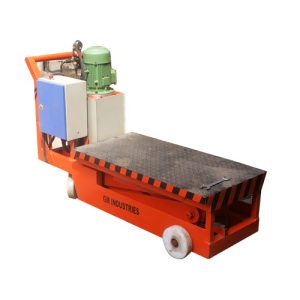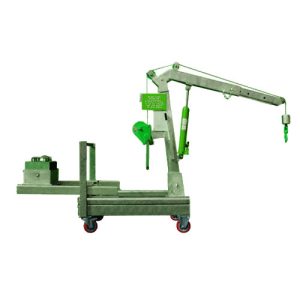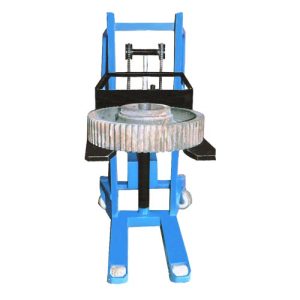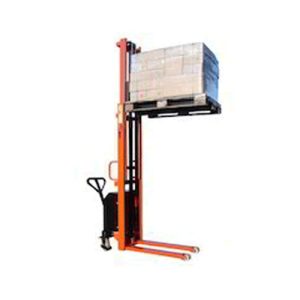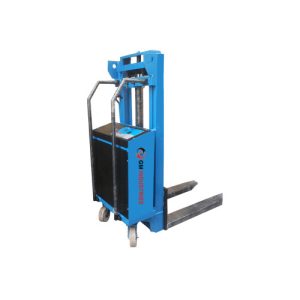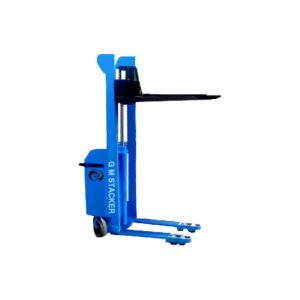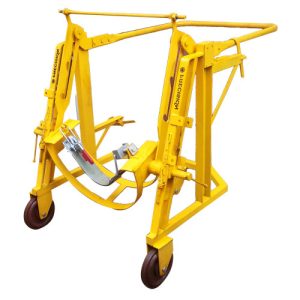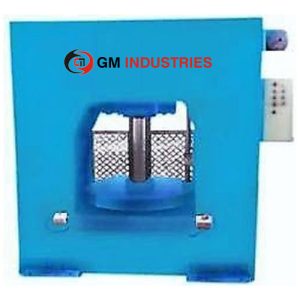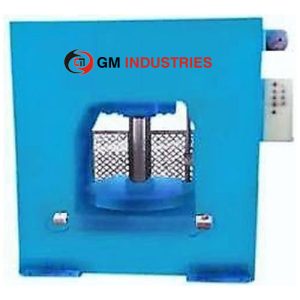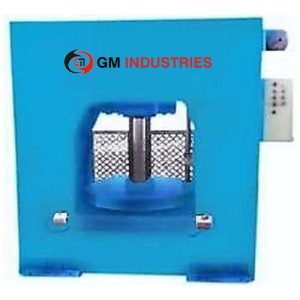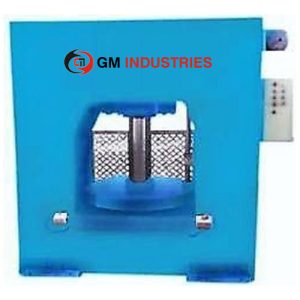Induction Melting
What is Melting?
Melting is the process by which a solid substance is transformed into a liquid state due to an increase in temperature. This occurs when the heat energy supplied to the solid overcomes the forces of attraction between its particles, causing them to become disordered and able to move freely past one another. The temperature at which melting occurs is known as the substance’s melting point. Once a substance has melted, it can be poured or moulded into a new shape, and it will retain its liquid state until it is cooled back down to its solid form. Melting is an important physical process in many fields, including chemistry, materials science, and metallurgy.
The most common method used for melting is heating the substance with a heat source such as a flame, electric heater, or furnace. The heat source is placed underneath or around the substance, and as the temperature increases, the substance begins to melt. Induction heating is becoming increasingly popular as it uses an alternating magnetic field to generate heat within the substance being melted, rather than relying on a separate heat source. This results in faster, more uniform heating, which reduces processing time and improves product quality.
Why Induction Heater is used for Melting Processes?
An induction heater is often used for melting processes due to several advantages over traditional heating methods. Initially, induction heating is highly efficient, as it directly heats the material being melted rather than relying on a separate heat source. This results in faster, more uniform heating, which reduces processing time and improves product quality. Furthermore, induction heating provides precise temperature control, which is critical for melting processes that require accurate temperature management. Induction heaters can quickly adjust the power input to maintain a consistent temperature, ensuring that the material is melted evenly without overheating or under heating. Thirdly, induction heating is more environmentally friendly than traditional heating methods. It uses less energy and produces fewer emissions, making it a more sustainable option for melting processes. Finally, induction heating offers greater flexibility in terms of the types of materials that can be melted. Overall, the advantages of induction heating make it a popular choice for melting processes in various industries, including metalworking, polymer processing, and semiconductor manufacturing
Introduction to Industrial Induction Heater for Melting
An industrial induction heater for melting is a specialized piece of equipment used in various manufacturing industries to melt different materials. The process involves using high-frequency alternating currents to generate an electromagnetic field around the material to be melted, inducing electrical currents within the material itself. These currents produce heat that melts the material, allowing it to be shaped or formed into a desired shape.
The induction heater for melting typically consists of a power supply, an induction coil, and a cooling system. The power supply generates high-frequency alternating currents that are fed to the induction coil. The induction coil is typically made of copper tubing or other conductive material and is designed to generate a strong electromagnetic field when energized by the high-frequency currents. This field induces electrical currents within the material being melted, causing it to heat up and eventually melt.
The cooling system is used to dissipate the heat generated during the melting process and prevent the equipment from overheating. The cooling system typically consists of a water cooling system or an air cooling system, depending on the specific application and requirements of the process.
GM Industries plays a major role in finding the perfect industrial induction heater for melting by offering customized solutions to meet the unique requirements of different industries. We use the latest technology and high-quality components to ensure that their equipment is reliable, efficient, and safe to use.
Advantages of Using an Industrial Induction Heater for Melting
Using an industrial induction heater for melting offers several advantages over traditional melting methods. Some of the key benefits include:
Efficiency
Induction heating is a highly efficient method of melting materials as it directly heats the material being melted. This results in faster, more uniform heating and reduced processing time.
Precise Temperature Control
Industrial induction heaters offer precise temperature control, critical for melting processes that require accurate temperature management. This ensures that the material is melted evenly without overheating or under heating. Versatility: Induction heating is a versatile method of melting, as it can be used to melt a wide range of materials, including metals, plastics, and glass.
Versatility
Induction heating is a versatile method of melting, as it can be used to melt a wide range of materials, including metals, plastics, and glass.
Environmentally Friendly
Induction heating is more environmentally friendly than traditional melting methods as it uses less energy and produces fewer emissions. Increased Safety: Induction heating is a safer method of melting compared to other methods such as open flame heating, as there is no open flame or contact with the heating element.
Increased Safety
Induction heating is a safer method of melting compared to other methods such as open flame heating, as there is no open flame or contact with the heating element.
Subtitle
Consistency
Industrial induction heaters for melting provide consistent results, resulting in improved product quality and reducing scrap rates.
Subtitle
Lower Costs
Induction heating can reduce operating costs by using less energy and producing less waste, resulting in cost savings for businesses.
Overall, the advantages of using an industrial induction heater for melting make it a popular choice for various industries, including metalworking, polymer processing, and semiconductor manufacturing.
Induction Heater for Various Melting Process

Induction heater for Melting Steel billets
Steel billets are typically rectangular bars of steel that are used as raw materials for various industrial applications. Induction heating is widely used for melting steel billets as it offers several advantages over other heating methods. The induction heater for melting steel billets uses a high-frequency alternating current to generate an electromagnetic field that induces heat within the billet. This heating process is highly efficient and results in faster melting times and lower energy consumption compared to traditional methods like gas or oil-fired furnaces. Additionally, induction heating allows for precise temperature control, which is crucial in ensuring the quality and consistency of the melted steel. Using an induction heater for melting steel billets is important because it can significantly reduce the production time and cost while also improving the quality of the final product.

Induction heater for Melting Aluminium ingots
Aluminium ingots are blocks of aluminium that are used as raw materials in various industrial applications such as automotive, aerospace, and construction. Induction heating is commonly used for melting aluminium ingots due to its high energy efficiency and fast melting times. The induction heater for melting aluminium ingots uses a high-frequency alternating current to generate an electromagnetic field that induces heat within the ingot. This heating process is highly efficient and results in faster melting times and lower energy consumption compared to traditional methods like gas or oil-fired furnaces. Induction heating also allows for precise temperature control, which is essential in ensuring the quality and consistency of the melted aluminium. Using an induction heater for melting aluminium ingots is important because it can significantly reduce the production time and cost while also improving the quality of the final product.

Induction heater for Melting Gears
Gears are an essential component of various industrial machines and vehicles. Induction heating is commonly used for melting gears during the manufacturing process due to its high energy efficiency and fast melting times. The induction heater for melting gears uses a high-frequency alternating current to generate an electromagnetic field that induces heat within the gear. This heating process is highly efficient and results in faster melting times and lower energy consumption compared to traditional methods like gas or oil-fired furnaces. Induction heating also allows for precise temperature control, which is crucial in ensuring the quality and consistency of the melted gear. Using an induction heater for melting gears is important because it can significantly reduce the production time and cost while also improving the quality of the final product.

Induction heater for Melting shafts
Shafts are an essential component of various industrial machines and vehicles. Induction heating is commonly used for melting shafts during the manufacturing process due to its high energy efficiency and fast melting times. The induction heater for melting shafts uses a high-frequency alternating current to generate an electromagnetic field that induces heat within the shaft. This heating process is highly efficient and results in faster melting times and lower energy consumption compared to traditional methods like gas or oil-fired furnaces. Induction heating also allows for precise temperature control, which is crucial in ensuring the quality and consistency of the melted shaft. Using an induction heater for melting shafts is important because it can significantly reduce the production time and cost while also improving the quality of the final product.

Induction Heater for Melting Bearings
Bearings are used in various mechanical applications to reduce friction and support loads. The process of melting bearings involves heating the metal to its melting point and then pouring it into a mold to create the desired shape. Induction heating is commonly used in this process because it is a quick and efficient way to heat the metal. Induction heaters can provide high heat intensity and precise temperature control, which is essential for producing high-quality bearings. Using an induction heater also reduces the risk of overheating or damaging the metal, ensuring the finished product is of high quality and durability.

Induction Heater for Melting Races
Races are the inner and outer rings of a bearing that support the rolling elements. They are typically made of steel or other metals and are produced through a melting process similar to that of bearings. Induction heating is an effective method for melting races because it can quickly and evenly heat the metal to its melting point. This ensures that the final product has a uniform structure and high-quality surface finish. Induction heating is also an efficient and cost-effective way to melt races, making it a popular choice in the manufacturing industry.

Induction Heater for Melting Springs
Springs are used in various mechanical applications, including automotive and industrial machinery. They are typically made of steel or other metals and must be heated to their melting point before being shaped into the desired form. Induction heating is a popular method for melting springs because it provides high heat intensity and precise temperature control, ensuring that the metal is heated uniformly and quickly. Using an induction heater also reduces the risk of overheating or damaging the metal, ensuring the finished product is of high quality and durability.

Induction Heater for Melting Wire
Wire is used in various applications, including electrical wiring and cables, as well as in the construction of machinery and equipment. The process of melting wire involves heating the metal to its melting point and then pouring it into a mold to create the desired shape. Induction heating is commonly used in this process because it is a quick and efficient way to heat the metal. Induction heaters can provide high heat intensity and precise temperature control, which is essential for producing high-quality wire. Using an induction heater also reduces the risk of overheating or damaging the metal, ensuring the finished product is of high quality and durability.

Induction Heater for Melting Cutting Tools and Dies
Cutting tools and dies are used in various manufacturing processes to cut and shape materials. They are typically made of steel or other metals and must be heated to their melting point before being shaped into the desired form. Induction heating is a popular method for melting cutting tools and dies because it provides high heat intensity and precise temperature control, ensuring that the metal is heated uniformly and quickly. Using an induction heater also reduces the risk of overheating or damaging the metal, ensuring the finished product is of high quality and durability.

Induction Heater for Melting Engine Blocks
Engine blocks are an essential component of an internal combustion engine. They are typically made of cast iron or aluminum and must be heated to their melting point before being cast into the desired shape. Induction heating is a popular method for melting engine blocks because it provides high heat intensity and precise temperature control, ensuring that the metal is heated uniformly and quickly. Using an induction heater also reduces the risk of overheating or damaging the metal, ensuring the finished product is of high quality and durability.

Induction Heater for Melting Cylinder Heads
Cylinder heads are one of the most critical components of an engine, as they house the combustion chambers and control the flow of gases in and out of the engine. They are typically made of aluminum or cast iron and require precise melting and casting processes to ensure their strength and durability. Induction heaters are often used for melting cylinder heads due to their speed and efficiency. The process of melting cylinder heads begins with the selection of high-quality raw materials. The materials are then melted down in an induction furnace, which uses electromagnetic induction to generate heat. The furnace is designed to maintain precise temperatures and ensure even heating of the molten metal. Induction heaters are particularly well-suited for melting cylinder heads because they offer several advantages over traditional heating methods. First, induction heating is faster and more energy-efficient than other methods, which means that manufacturers can produce cylinder heads more quickly and at a lower cost. Additionally, induction heating is highly controllable, which allows for precise temperature control and reduces the risk of defects or impurities in the final product.

Induction Heater for Melting Pipes and Tubes
Pipes and tubes are used in a wide range of industries, including oil and gas, construction, and transportation. They are typically made of steel, copper, or aluminium and require precise melting and casting processes to ensure their strength and durability. Induction heaters are often used for melting pipes and tubes due to their speed and efficiency. The process of melting pipes and tubes begins with the selection of high-quality raw materials. The materials are then melted down in an induction furnace, which uses electromagnetic induction to generate heat. The furnace is designed to maintain precise temperatures and ensure even heating of the molten metal. Induction heaters are particularly well-suited for melting pipes and tubes because they offer several advantages over traditional heating methods. First, induction heating is faster and more energy-efficient than other methods, which means that manufacturers can produce pipes and tubes more quickly and at a lower cost. Additionally, induction heating is highly controllable, which allows for precise temperature control and reduces the risk of defects or impurities in the final product. Finally, induction heating is a cleaner and more environmentally friendly process than other heating methods, which makes it an attractive option for manufacturers looking to reduce their environmental impact.
Induction Heaters Offered by GM Industries
For more information on any of our high quality products or getting accurate prices contact GM Industries at
Call Us
+(91)-9820533489 / 7738562224
Enquiry Form
Submit
Frequently Asked Questions
An induction heater uses electromagnetic induction to generate heat within a metal object placed within the magnetic field. The heat generated can then be used to melt the metal.
An induction heater can be used to melt a wide range of metals including steel, aluminum, copper, brass, and gold.
Yes, induction heaters can be used for melting both small and large quantities of metal.
The time it takes for an induction heater to melt metal depends on the amount of metal being melted and the power of the induction heater. However, induction heating is generally faster than other heating methods.
Yes, induction heaters are generally safe to use for melting applications as they do not produce open flames or emit harmful fumes.
Induction heating is typically faster, more energy-efficient, and provides more precise temperature control than other heating methods such as gas furnaces or electric resistance heaters.
The temperature ranges for melting metal using an induction heater can vary depending on the metal being melted, but typically ranges from 1,000 to 3,000 degrees Fahrenheit.
Yes, induction heaters can be used for melting metal in a vacuum or controlled atmosphere to prevent oxidation.
Induction heaters are commonly used in industries such as metalworking, automotive manufacturing, aerospace, and semiconductor manufacturing.
Yes, induction heaters can be used for melting scrap metal as they can handle a wide range of metals and alloys.
Crucibles made from materials such as graphite, ceramic, and refractory metals are commonly used with induction heaters for melting applications.
The maximum capacity of an induction heater for melting applications can vary depending on the size and power of the heater, but can range from a few pounds to several tons.
The metal is melted evenly using an induction heater by ensuring that the magnetic field is distributed evenly across the metal object being heated.
Yes, induction heaters can be used for melting metal in a crucible as long as the crucible material is compatible with the induction heating process.
Safety precautions include using personal protective equipment, properly grounding the equipment, and following all safety guidelines provided by the manufacturer.
The size of the metal object being melted affects the induction heating process as larger objects may require more power to heat evenly.


